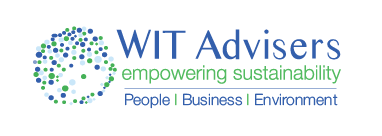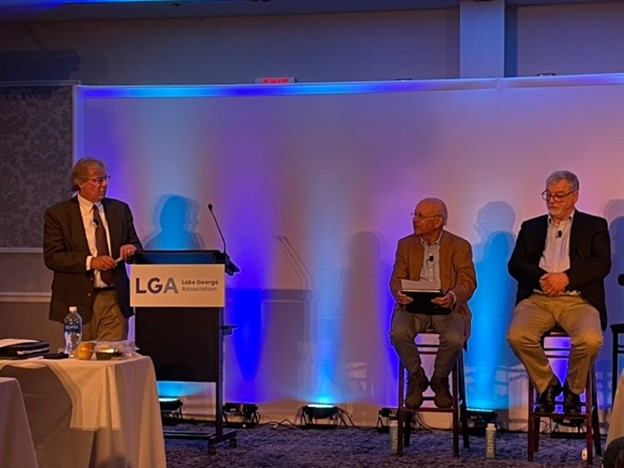A report from the 7th Annual Salt Summit.
Foothills business daily
OCTOBER 14, 2022, 9:36 AM
Three members of the state’s Adirondack Road Salt Reduction Task Force said their overdue findings are coming soon, that the report will have a lot of ideas and recommendations, but the report will not be the “be all and end all” of road salt reduction in the Adirondacks. They said this during a panel discussion on the topic at the seventh annual Adirondack Champlain Regional Salt Summit held at the Fort William Henry Resort in Lake George Village. It is hosted and organized by the Lake George Association, which has been working on the issue and has had success at reduction for years.
“I would rather have a good report than a hurried report,” said Hamilton County Highway Superintendent Tracy Eldridge. He was joined on stage by task force members Bob Kafin, an environmental attorney, and Phil Sexton of WIT Advisors, a company that focuses on “sustainable winter management,” a salt reduction program.
Adirondack Council member Dave Miller, the council’s clean water program coordinator, was also a panelist although he is not listed on the state task force. Lake George Waterkeeper Chris Navitsky moderated.
All the task force can do is make recommendations, Kafin said, adding later that the report cannot be the last word on this because many ideas will need to be tested, examined by scientists and retried if necessary.
Similarly, Miller said that the report’s many recommendations will need to be turned into projects. Those projects will require buy-in from the state-level policymaker to the truck driver spraying brine on the road to the landowner throwing salt on the sidewalk.
Kafin said: “The state has to take a lead” with legislation and money to encourage implementation.
Eldridge said that everyone on the task force along with highway superintendents throughout the Adirondack Park “hate” road salt. But the problem is not as easy as reducing it, he said.
“We see what it [road salt] does to our infrastructure. We see what it does to our bridges,” Eldridge said. He might want to reduce salt to save the water and avoid corrosion on the infrastructure, but he also needs to create a safe way for people to travel.
He said the “safe approach” is simply to put more salt on the road, though all highway departments know this is not the best answer.
He said: “This road salt reduction is much more complex than meets the eye.”
The panelists agreed.
They said that each of the groups in the process must have an incentive to make the right choices, which requires effective communication aimed specifically at the individuals.
Expectations will likely have to adjust, which will require a cultural shift for those living through winter in the Adirondacks. This became a theme as the panelists spoke and was an echo from the 2022 conference. Last year, keynote speaker Ted Diers told the group that the best way to reduce road salt in drinking and lake water was to avoid putting it on the roads to begin with.
As with last year, the discussion turned to the difficulty making the shift.
“We expect bare roads while it’s snowing,” Sexton said at one point as the panel discussed the necessary shift in culture.
Eldridge agreed, saying people must understand: “Wintertime driving is different than summertime driving.”
Dave Miller said part of the challenge will be to create the right culture and policy, adding more than once that “it has to break down silos,” that is, the communication between policymakers, practitioners and local governments must improve.
Eldridge said he believed the region can make the changes needed.
“We’re in agreement” that the region must reduce road salt, Eldridge said. “It’s how to get there” that causes trouble.
The Adirondack Road Salt Reduction Task Force was created in 2021 to assess the impacts of road salt on the environment and to conduct a comprehensive review of best management practices that considers both the environment and public safety.


Recent Comments